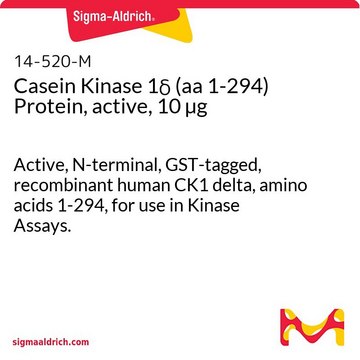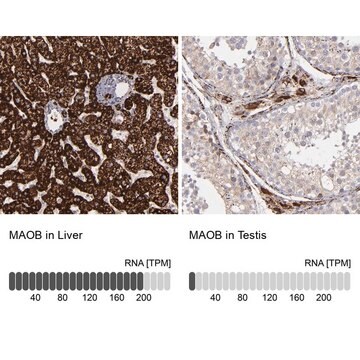AB15242
Anti-zDHHC8 Antibody
from rabbit, purified by affinity chromatography
Synonim(y):
Zinc finger DHHC domain-containing protein 8, Zinc finger protein 378, membrane-associated DHHC8 zinc finger protein, zinc finger, DHHC domain containing 8, zinc finger, DHHC domain like containing 1, zinc finger, DHHC-type containing 8
About This Item
Polecane produkty
pochodzenie biologiczne
rabbit
Poziom jakości
forma przeciwciała
affinity isolated antibody
rodzaj przeciwciała
primary antibodies
klon
polyclonal
oczyszczone przez
affinity chromatography
reaktywność gatunkowa
rat, human
reaktywność gatunkowa (przewidywana na podstawie homologii)
horse, bovine, Xenopus, chicken, pig, chimpanzee, ape, opossum, mouse, dog
metody
western blot: suitable
numer dostępu UniProt
Warunki transportu
wet ice
docelowa modyfikacja potranslacyjna
unmodified
informacje o genach
chimpanzee ... Zdhhc8(458662)
human ... ZDHHC8(29801)
Opis ogólny
brain, and maximal expression coincides with peak forebrain synaptogenesis shortly after birth. Furthermore, their protein products are associated with brain mitochondria, including those in synaptic terminals. Among the six, only Zddhc8 influences mitochondria-regulated apoptosis when overexpressed, and appears to interact biochemically with established mitochondrial proteins. Zdhhc8 has an apparent interaction with Uqcrc1, a component of mitochondrial complex III. The two proteins are coincidently expressed in pre-synaptic processes; however, Zdhhc8 is more frequently seen in glutamatergic terminals (1).
Specyficzność
Immunogen
Zastosowanie
Neuroscience
Developmental Neuroscience
Jakość
Opis wartości docelowych
Postać fizyczna
Przechowywanie i stabilność
Handling Recommendations: Prior to removing the cap, gently centrifuge the vial and gently mix the solution.
Komentarz do analizy
Fetal human brain
Inne uwagi
Oświadczenie o zrzeczeniu się odpowiedzialności
Nie możesz znaleźć właściwego produktu?
Wypróbuj nasz Narzędzie selektora produktów.
Kod klasy składowania
10 - Combustible liquids
Klasa zagrożenia wodnego (WGK)
WGK 2
Temperatura zapłonu (°F)
Not applicable
Temperatura zapłonu (°C)
Not applicable
Certyfikaty analizy (CoA)
Poszukaj Certyfikaty analizy (CoA), wpisując numer partii/serii produktów. Numery serii i partii można znaleźć na etykiecie produktu po słowach „seria” lub „partia”.
Masz już ten produkt?
Dokumenty związane z niedawno zakupionymi produktami zostały zamieszczone w Bibliotece dokumentów.
Nasz zespół naukowców ma doświadczenie we wszystkich obszarach badań, w tym w naukach przyrodniczych, materiałoznawstwie, syntezie chemicznej, chromatografii, analityce i wielu innych dziedzinach.
Skontaktuj się z zespołem ds. pomocy technicznej








